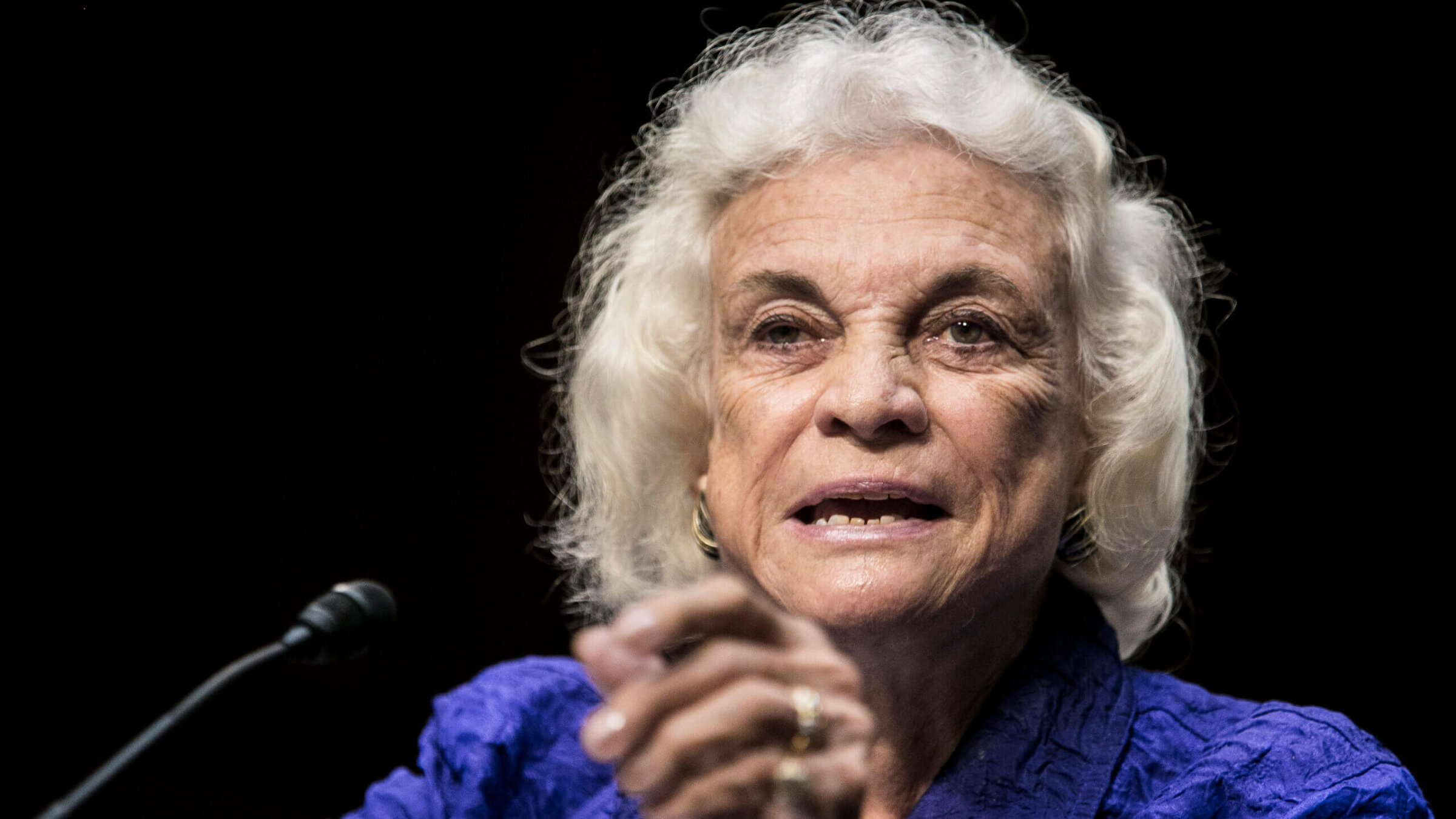Was Sandra Day O’Connor the Supreme Court’s first rabbi?
O’Connor, who died Friday at 93, embodied the rabbinic principal of compromise

Former Supreme Court Justice Sandra Day O’Connor testified before the Senate Judiciary Committee on July 25, 2012. Photo by T.J. Kirkpatrick/Getty Images
Editor’s note: This story about Justice Sandra Day O’Connor, who died Friday at 93, was originally published on July 8, 2005, after O’Connor announced her retirement from the Supreme Court.
Referring to the 1964 candidacy of Barry Goldwater, humorist Harry Golden once quipped, “I always knew the first Jewish president would be an Episcopalian.”
The joke gets better: As it turns out, the first rabbi on the Supreme Court was another Arizona Republican — this one named O’Connor.
Since Sandra Day O’Connor announced her retirement, she has been described repeatedly as the swing vote on a range of highly charged issues, cementing her reputation as the most influential member of the court and fueling predictions of a bitter political fight over her replacement. But, as was the case for most of her 24 years on the court, O’Connor’s hard-to-pigeonhole centrism has left observers struggling to offer a clear explanation of her legal philosophy.
Conservative critics panned her as a judicial activist who decided cases based on her own political leanings (by which, they mean, she disagreed with right-wing Republicans too much); liberals hailed her as a principled, moderate conservative (meaning she agreed with Democrats more than Antonin Scalia does). Perhaps the best way to get a handle on her jurisprudence, however, was not to see her as a liberal, moderate or conservative but as an heir to a centuries-old archetype of legal arbiter: the rabbi.
O’Connor perfected the use of the swing vote to split the differences and hold the center on the day’s most controversial social issues — including abortion, affirmative action and church-state separation. In so doing, she seemed to echo two ideals that underpin the halachic, or rabbinic legal, system.
The first is pesharah — compromise. In today’s cable-driven sound-bite universe, searching for the middle ground is often derided as surrender, a lack of conviction or — with Scalia and his conservative acolytes looking over your shoulder — judicial activism. But according to the late religious leader of Modern Orthodoxy, Rabbi Joseph Soloveitchik, compromise is a “fundamental” value in the rabbinic legal system.
“Most controversies and cases of litigation that came before the rabbis… did not result and end in a verdict based upon the strict law,” Soloveitchik said in a 1973 speech, excerpted in Aaron Rakeffet-Rothkoff’s The Rav: The World of Rabbi Joseph B. Soloveitchik.
“Compromise, in the halachic juridic context, is not just a way out of a difficult and long litigation,” Soloveitchik said, adding, “The ideal legal solution is not a verdict in terms of strict law, but a verdict … in terms of compromise.”
The second ancient rabbinic ideal reflected in O’Connor’s judicial opinions could be gleaned from the talmudic adage: “Go look how the people are practicing.”
O’Connor’s skill was not simply to calibrate the midpoint between two positions. More often than not, she managed to craft compromise opinions — abortion with limits, affirmative action as a highly restricted stopgap measure — reflecting the gray shades of public opinion that are generally obscured by the sharp blue and red lines demarking our warring interest groups and political partisans.
Even New Republic legal affairs editor and New York Times Magazine contributor Jeffrey Rosen — one of O’Connor’s most prominent critics from the center — recently acknowledged, “It would seem, on balance, the views of a majority of Americans are more accurately represented by the moderate majority on the Supreme Court, led in recent years by Justice Sandra Day O’Connor, than by the polarized party leadership in the Senate, led by Bill Frist and Harry Reid.”
This was quite an admission for Rosen, who, writing in the Times back in 1995, derided her repeated efforts “to stake out a judicious compromise” and declared that “there is nothing moderate or restrained about Justice O’Connor’s jurisprudence.”
“Rather than being guided by consistent legal rules, lawyers and judges must try to read her mind before they can be confident about what the law requires,” Rosen had argued. “This increases Justice O’Connor’s authority, but it undermines the stability and predictability that define the rule of law.”
While Rosen’s view has merit, and clear rules are important, sometimes better rules can arise from more nuanced decisions that take the compelling realities of a case into account.
What Rosen and likeminded critics seemed to miss over the years is that while O’Connor’s methods may have frustrated lawyers and interest groups, she helped navigate the court through dangerous political waters, as bipartisanship and triangulation gave way to polarization in Congress and the White House. It is no stretch to argue that her independent streak and knack for compromise played a key role in helping the court overcome the perception that the justices were choosing political sides during the aftermath of the 2000 election; in general, her guiding hand has clearly helped preserve the court’s relatively good standing in the eyes of the public (even if it has earned her repeated rebukes in Scalia’s increasingly acerbic dissents).
Some eras call for liberal or conservative ideologues on the bench. But other times, what you really need is a good rabbi.















